issaquah foot and ankle
Displaying items by tag: issaquah foot and ankle
Dr Timothy Young Talks About Tight Calves and Foot Problems, Part 2
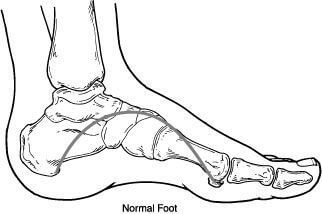
Tight calves and Achilles are a major factor in many foot problems. That is why we use a night splint and calf stretching is helpful for many problems. Problems in the front of the foot like 2nd toe capsulitis metatarsalgia often respond well to calf stretching. We have discussed how during gait, early heel rising and transfer of weight to the front of the foot can increase the load and weight transfer to the forefoot (and midfoot). This early transfer of weight and mechanical load can be destructive.
With our example of capsulitis of the 2nd toe, we now have an extra load going through the 2nd metatarsal and toe joint. Eventually the extra load can strain the 2nd metatarsal and capsule. This can lead to capsulitis or even a stress fracture of the metatarsal. So, to help with this, we have our patients stretch their calf and use a night splint. We avoid shoes that further put more pressure on the front of the foot (like high heeled shoes). We even recommend shoes with zero heel drop, like Altra shoes. This is just one example of how equinus can factor into a foot problem, there are so many more examples where this happens. So, this is just the “tip of the iceberg” as a major factor in many foot problems and pathology. Keeping your calf stretched out is one of the single best exercises you can do to keep your feet healthy!
If you are experiencing foot or ankle pain, give us a call today at 425-391-8666 or make an appointment online.
Dr Timothy Young Talks About Tight Calves and Foot Problems

Dr Timothy Young Talks About Tight Calves and Foot Problems
As mentioned, the mechanical load on the foot from the calf and ultimately the Achilles is tremendous. So, with equinus ( a tight calve and or Achilles) there are many problems. Think of a woman who wears high heel shoes every day for many years and over time the calf gets less flexible. Now with that tight calf, her gait has changed. As she walks, with each step going forward that tight calf pulls, and her heel comes off the ground early. Early heel off with gait leads to early transfer of weight and force to the front of the foot. Over time, this extra pressure on the front of the foot can cause problems. This is like the childhood toewalker, but with adult body size and weight.
If you are experiencing any foot or ankle pain, give us a call today at 425-391-8666 or make an appointment online.
Dr. Brandon Nelson, A Board Certified Surgeon, Discusses Neuroma Surgery
Neuromas are a common presenting pathology in my office. I see quite a few in the typical week. The majority of patients with neuromas are female between the ages of 40-60. The patient will usually describe burning or tingling in the foot that is worse with shoes. Most of the time on exam one can feel the nerve moving, this is called a “Molder’s click”. I will usually get an x-ray and then help the patient with a long-term plan.
There are a few conservative modalities that work fairly well for a neuroma and I usually recommend trying these before proceeding to surgery. However, often times patients have tried these and are seeing me as a second opinion.
Surgery is relatively straight forward for a neuroma. The majority of us use a incision on the top of the foot that is about 3 inches long and provides great exposure to the nerve. The nerve is removed, and the entire procedure takes about 15 minutes. I let my patients walk after surgery and most are able to tolerate the discomfort from surgery with just an oral anti-inflammatory.
If you have burning or tingling in your foot or have been diagnosed with a neuroma I can help. Make an appointment today and we can review your options and get you back on your feet pain free.
Give us a call at 425-391-8666.
Bunion Surgery and Bunion Correctors, Dr. Brandon Nelson, a Board Certified Bunion Surgeon, Discusses Both
.jpg)
Bunions are a common pathology that presents to my practice. The majority of bunions are seen on women between the ages of 30-50. Most have noticed the bunion at an early age and slowly have noticed them grow. A lot of patients feel their shoe selection has contributed to the growth or their activities like running. We know that bunions are an inherited foot structure that gets worse with time and usage.
Bunion correctors are common on the internet and I have seen them all. What we know about bunion correctors are they can help relieve some pain that is related to soft tissue contractures. The bunion itself is a bony malalignment of the foot and the bunion corrector cannot move bone back into position. The bunion corrector can help stretch some of the soft tissues as the bunion gets larger. However, it should be noted no bunion split or corrector will fix you bunion or change the shape of your bunion.
Bunion surgery is the only way to realign the bones that cause a bunion. I recommend bunion surgery for anybody that is having pain or difficulty fitting shoes. I consult and hundreds of bunions a year and can tell you that they are not all the same. It is very important to have a complete workup including physical exam and x-ray of the bunion. Proper procedure selection is key to fixing the bunion correctly.
If you are experiencing bunion pain and would like a consultation please call us at 425-391-8666 or make an appointment online and I will review all your options from conservative to surgical at your appointment.
Dr. Timothy Young a Board Certified Foot Surgeon, Talks About Surgical Treatment of Capsulitis of the Second Toe and a Bunion Deformity Combined
Surgical treatment for this condition involves correction of the bunion deformity, which often helps the second MTP joint capsulitis. The ideal procedure for this would be fusion of the first metatarsal-cuneiform joint in combination with the bunionectomy (lapidus bunionectomy or lapiplasty). The fusion of the first metatarsal stabilizes the first metatarsal and therefore able to bear the weight that it should be proportional to the rest of the foot. Therefor this procedure takes some of the stress off of the next in line 2nd metatarsal. So a lapidus bunionectomy is often a very effective treatment for both the bunion and capsulitis of the 2nd toe.
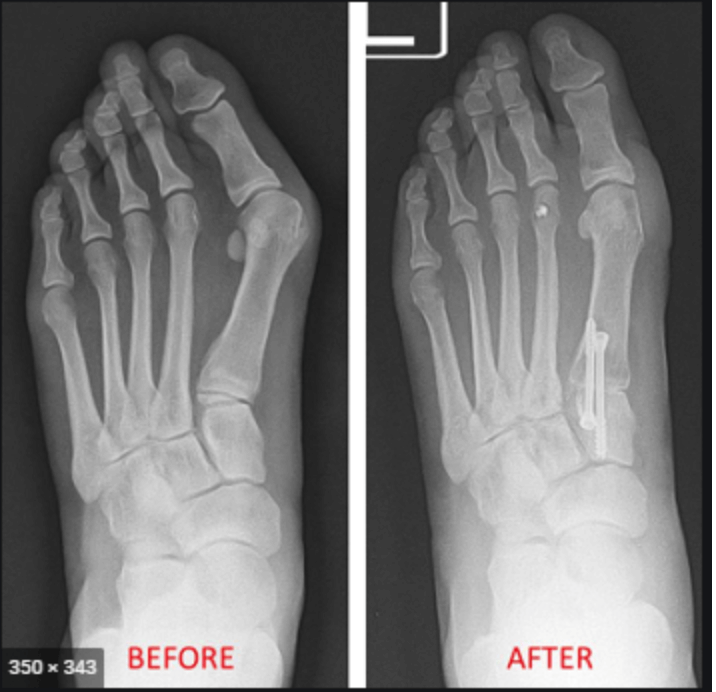
Dr. Brandon Nelson, A Board Certified Physician, Discusses Capsulitis of the Second Toe
Capsulitis is an inflammation of a capsule or joint. Your joints are defined by where two bones come together and have cartilage on the opposing surfaces and a joint sac (capsule) that encircles the two ends of those bones. Additionally in the joint capsule is fluid which helps the joint to glide smoothly.
The human body has many joints, the human foot has the highest concentration of joints with 33. The foot is an extremely complex structure and small deviations in the alignment can cause significant problems.
Capsulitis can have many causes, one of the most common is abnormal wear of a joint. Abnormal wear of a joint is usually attributed to increase pressures in that joint and can ultimately lead to arthritis. In the foot instability of the big toe can increase pressure in the 2nd toe leading to inflammation of that joint, the 2nd metatarsal phalangeal joint or MTPJ. What is typically seen is a patient with a bunion or a flat foot that causes results in high pressures of the 2nd MTPJ and the net result is pain. The pain can present with swelling, numbness or tingling. The eventual progression of this can lead to dislocation of the toe or what we call a cross over toe.
If you have pain around the second toe, icing and stretching can be very helpful. However it is important to have your foot evaluated as this is usually a progressive deformity that can cause increasing discomfort and eventual structural changes. I recommend an x-ray and an overall foot exam. Often times there are great conservative options to help this condition and help patients return back to activities. If you have 2nd MTPJ pain give us a call at 425-391-8666 or make an appointment online today.
Dr. Brandon Nelson Discusses When To See A Doctor If You Have Heel Pain
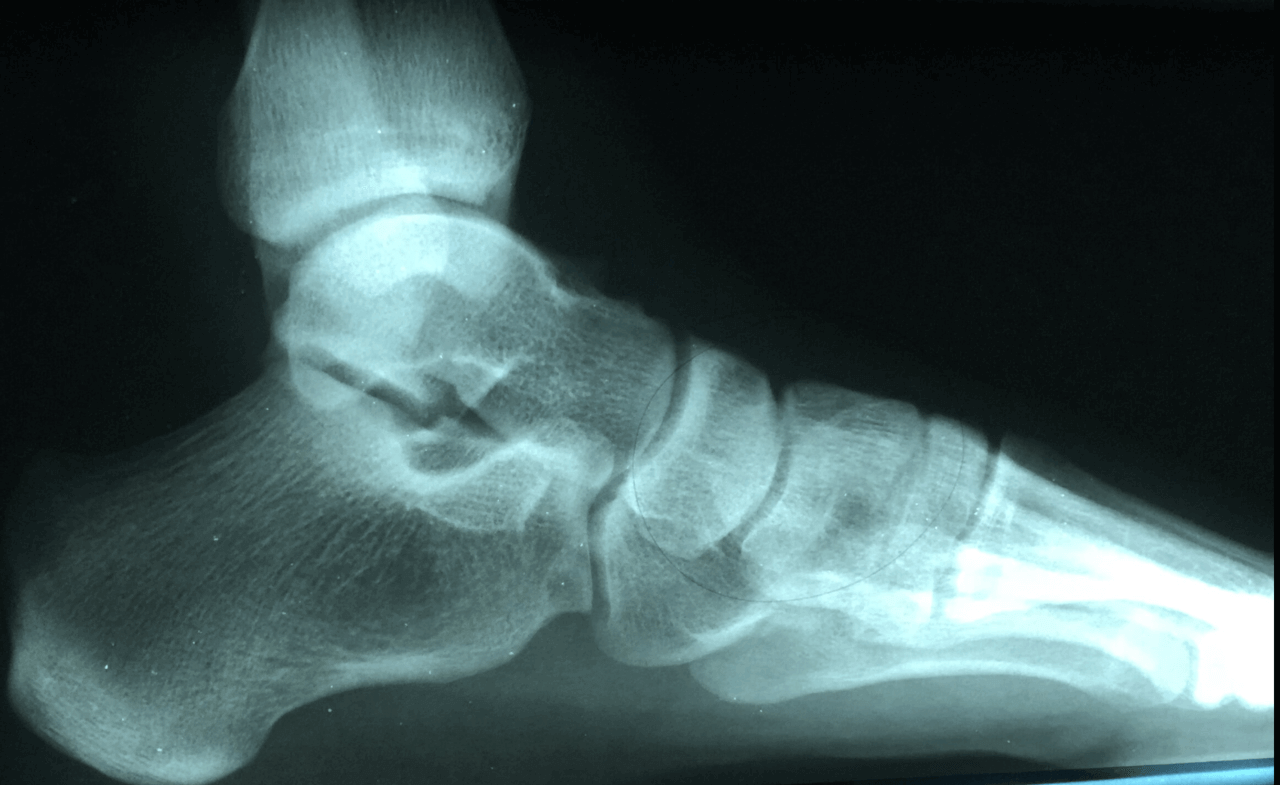
Heel pain has many causes, however the most common cause for adults is Plantar Fasciitis. Most of us have heard this term at some point in our lives because a friend or co-worker has talked about it. But what is it? The Plantar Fascia is the main supporting network of the foot. It runs from your heel bone all the way to your toes. It is active every time you stand or walk and is very important for normal gait cycles. Since this structure is under chronic strain it can become inflamed and over used. This will typically lead to pain in the morning or a bruised type sensation on the bottom of the heel. Patients will often state they feel like they are walking on a pebble. Plantar Fasciitis left untreated can become extremely painful and debilitating.
So when should you see a doctor. I cannot tell you how many patients I see that have had heel pain for greater than a year. The majority of patients will have tried icing and stretching and continue to have pain. I cannot stress enough that plantar fasciitis is much easier to treat with early intervention. I find it extremely valuable to get in to see your doctor early. This will lead to faster recovery and a better long term outcome. Additionally, they are other causes of heel pain and some of these can create serious long term damage. I think it is best if you have pain for greater than a week it is time to have it evaluated. Once evaluated my average patient has a 50-90% reduction in symptoms in less than 1 week.
If you are suffering from heel pain please give us a call at 425-391-8666 or make an appointment online.
Dr. Brandon Nelson Discusses When the Best Time to Have Bunion Surgery Is
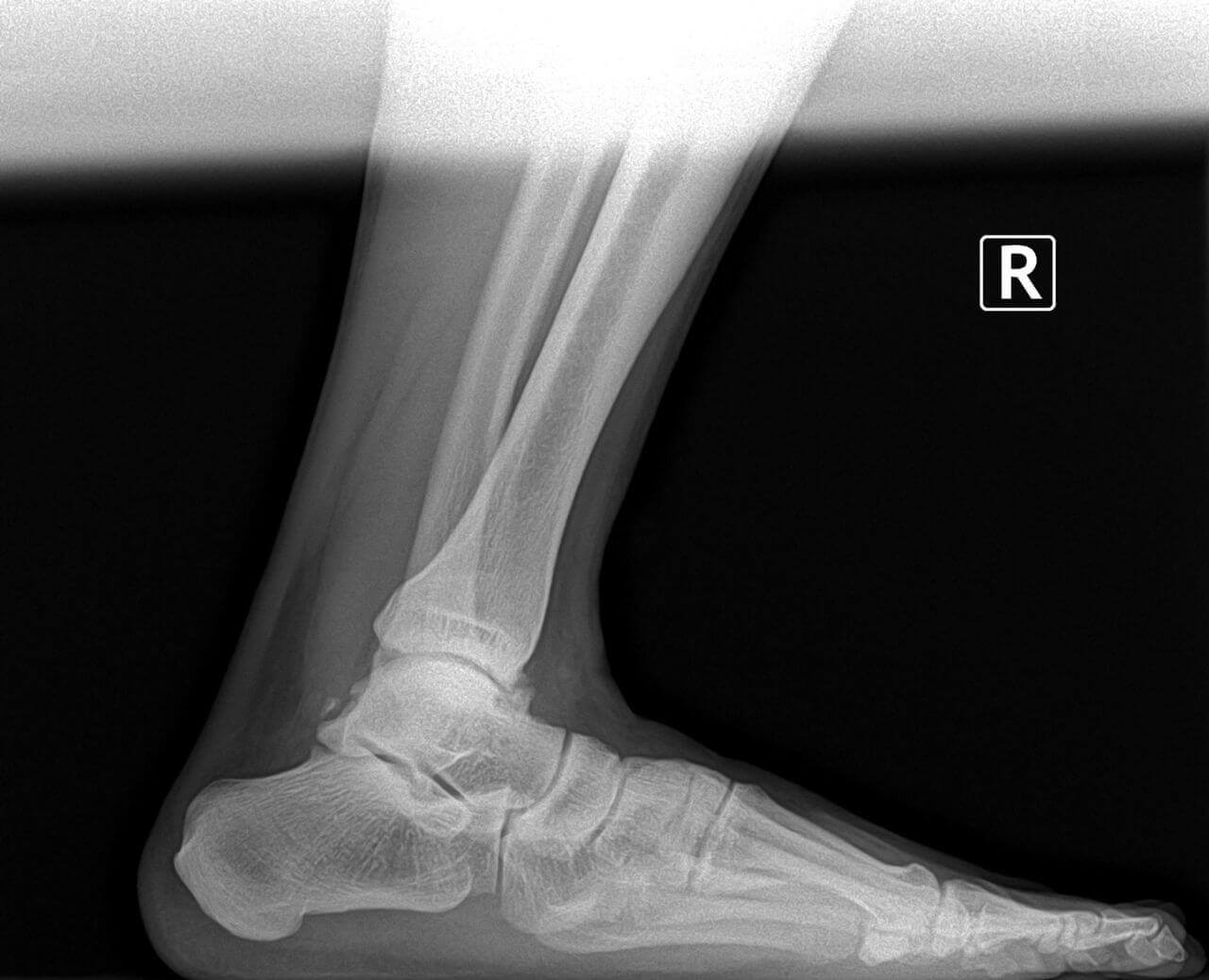
Surgery can be quite a bit to think about. Patients need to make work arrangements and plan with family and sometimes even friends. Especially if it is your first time having surgery it can feel like a lot. We at Issaquah Foot & Ankle Specialists have helped so many patients with surgery that our process makes it extremely easy and relaxing. We will help every step of the way. We provide a surgical binder that has everything you need and will make sure that you get all the assistance you need to make the process feel simple.
I think the most important part of planning when to have surgery is simply preparation. I tell most of my patients to think ahead and figure out when the slowest time of year is for you with both family and work. This is not always possible so the good news is we are here to help. The majority of procedures will allow patients to get back to activities in a few days. We have years of experience and can provide answers to any questions or concerns you may have.
The surgical process is easy as well. We have an onsite surgery center and most of the time you will be at the office for just a couple hours. We have dedicated rooms and staff that will assist you the entire time. If you are contemplating having your bunion fixed or having your neuroma or hammertoes corrected, we can help. Give us a call today at 425-391-8666 or make an appointment online.
Dr. Brandon Nelson, A Board Certified Bunion Expert, Discusses Why Issaquah Foot & Ankle Specialists Is The Number One Bunion Surgery Center
Why Us?
The bunion is a complex deformity that arises for many reasons. It is primarily a deviation of the toe on the first metatarsal and the medial cuneiform.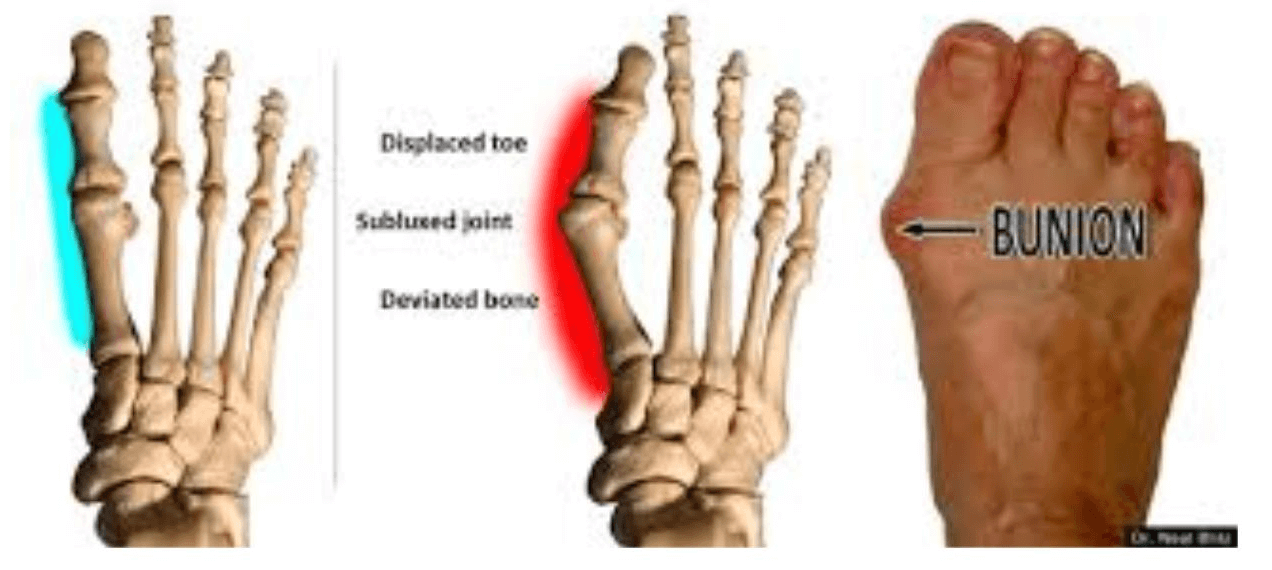
However, it is much more complex than that. The majority of surgeons do not appreciate the fundamental nature of the bunion and the inherit instability of the foot that leads to the bunion. That is where Issaquah Foot & Ankle Specialists are different than the majority of clinics, we specialize in bunions and are considered the premier experts.
To further expend on why we are the only place to have bunion surgery will take a little understanding of the deformity itself. The bunion is not a simple deviation of the toe it is complex condition that requires consideration of the overall foot structure and the cardinal planes of the body. Cardinal planes or anatomical planes are terms we use to describe the three-dimensional relationship of the human body
and how it moves in space. The three cardinal planes are the frontal, transverse and saggital.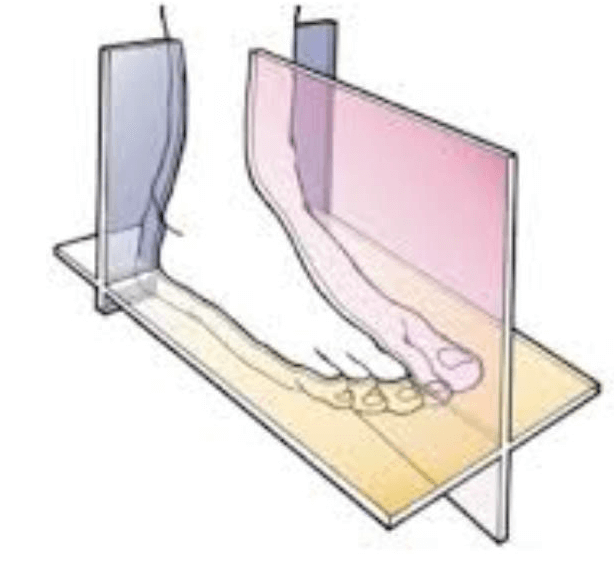
Why are these cardinal planes important when it comes to bunion surgery?
It is extremely important to evaluate all three anatomical planes when it comes to a bunion. The vast majority of bunion surgeons do not evaluate the bunion with respect to these planes and often use a 2-D picture to describe a 3-D problem. An example of this is what is called the Anterior-Posterior x-ray view. This is the view most commonly employed for a bunion.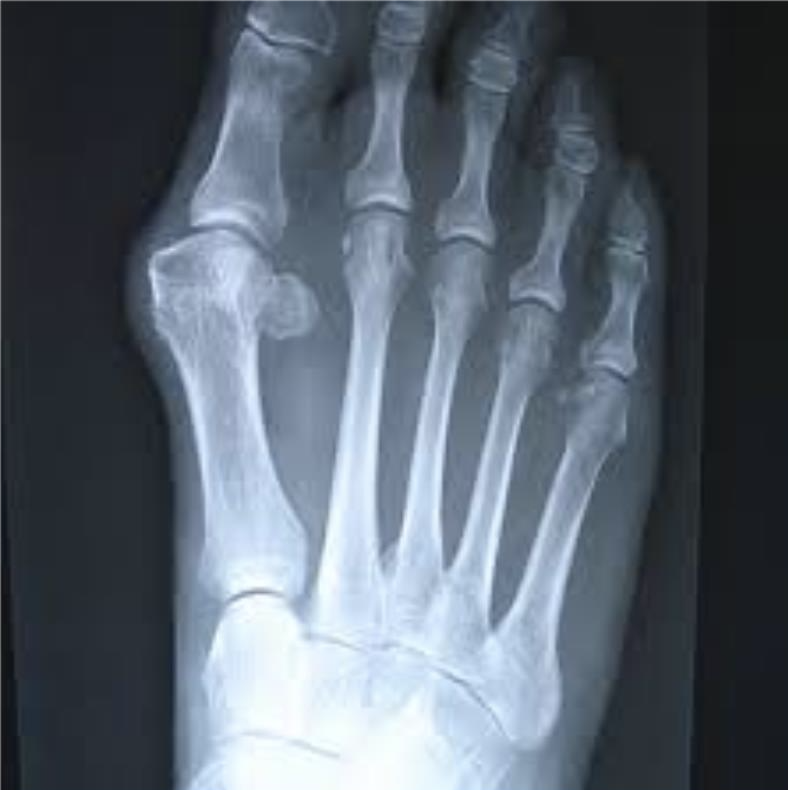
The problem with only evaluating the bunion on this top-down view is it only provides a picture of the deformity in one anatomical plane. This is where the problem lies. The large majority of bunion surgeons stop here and provide a correction in this plane only. This can ultimately result in reoccurrence and revisional surgery. This is an incomplete understanding of the bunion and one of the main reasons for poor outcomes. Issaquah Foot & Ankle Specialists provide a complete evaluation of the foot and bunion as a whole. That is why we also incorporate an x-ray technique that helps to evaluate the bunion relationship to the foot and all anatomical planes.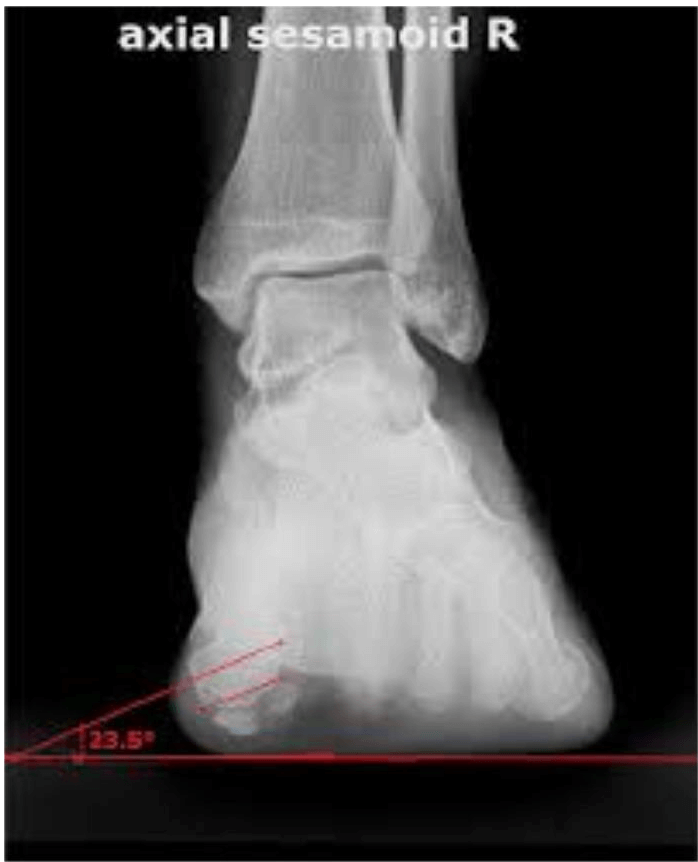
The above picture is called a sesamoid axial x-ray. It is one of the most important x-rays for a bunion. This helps the surgeon, in combination with the top-down view we saw above, make the best possible decision in planning for a bunion deformity correction. This sesamoid view above determines the bunion’s relationship in another anatomical plane the frontal plane. The frontal plane basically describes the position of the bunion and whether there is any rotation of the bone. If your surgeon only looks in one cardinal plane, they will miss the rotation of the bunion and only provide correction in one plane and your reoccurrence rate goes up.
I strongly recommend anybody that is contemplating bunion surgery to have your foot evaluated by one of our Doctors, we are Board Certified Bunion Experts and have over 30 years of experience and performed 1000’s of bunion surgeries.
Give us a call today at 425-391-8666 or make an appointment online today.
Dr. Timothy Young, A Board Certified Bunion Surgery Expert Talks About Avoiding Post-op Infections
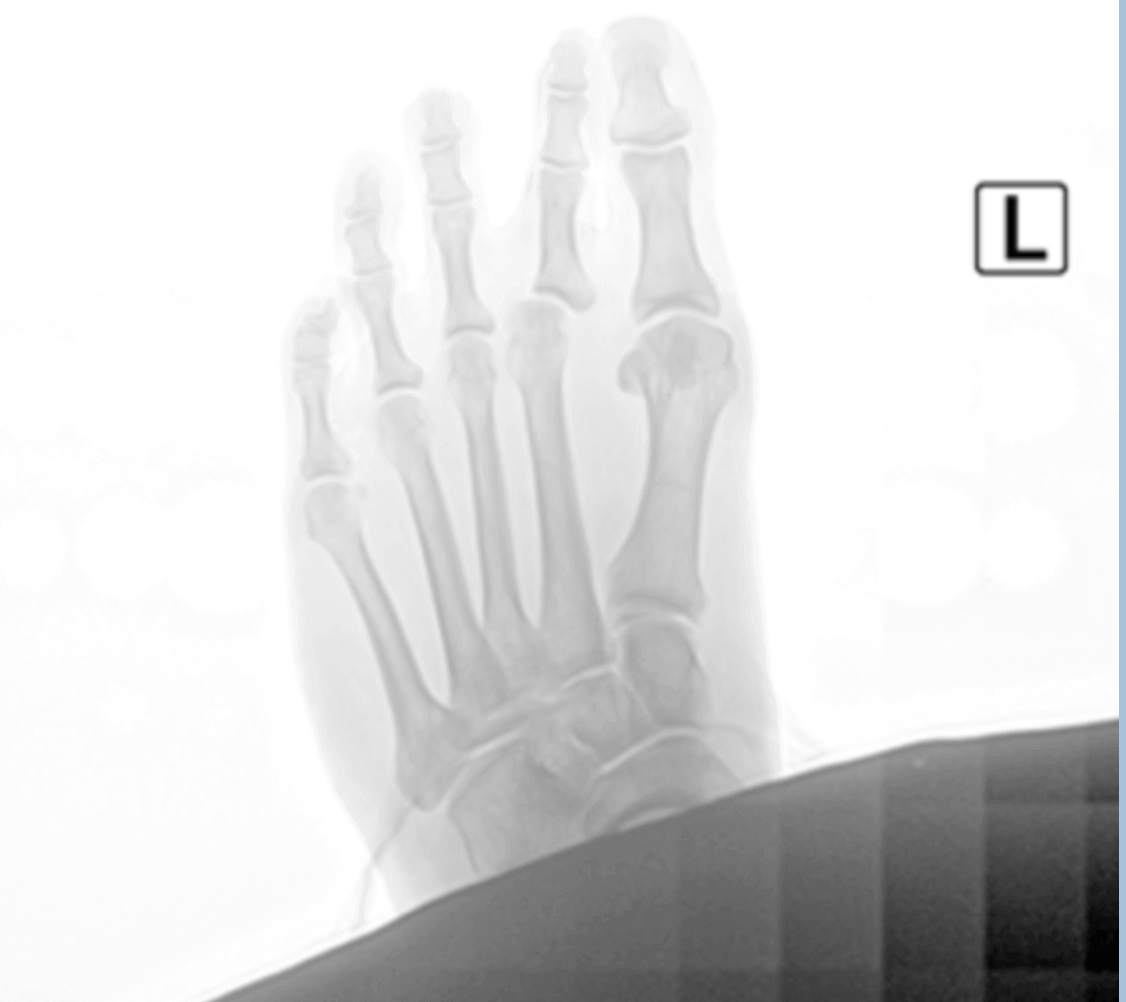
Complications from foot surgery are not common and many of them can be avoided with careful planning and following your doctor’s recommendations. Keeping your foot dry after surgery and until after your sutures are removed is recommended. During the first few days after surgery the incision site will still create a pathway for bacteria to get into the deeper tissue layers.
Sutures also penetrate a deeper layer and if they get wet or are contaminated they could create a direct pathway for bacteria to travel deep and cause an infection. We do not recommend allowing the incision site to get wet with bathing until after sutures are removed. Use a special cast protector for bathing and make sure that it is on correctly. A garbage bag with rubber bands may leak and fill with water-not good! Follow your doctor’s advice on wound care. At our clinic, after surgery we change our patient's dressings at our clinic to make sure it is done using sterile technique, for example a postop infection is certainly going to be more of a risk if you have an open wound or one that still has sutures and you get your foot wet such as bathing.
If you have questions about bunion surgery, and would like a consultation please let us know.
Give us a call today at 425-391-8666 or make an appointment online.



